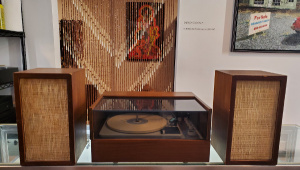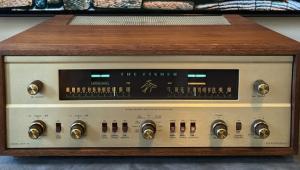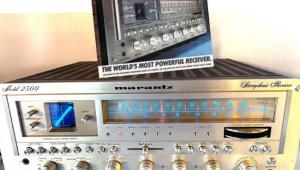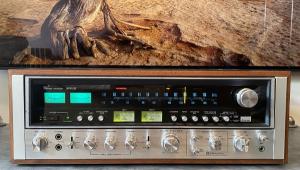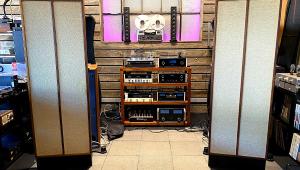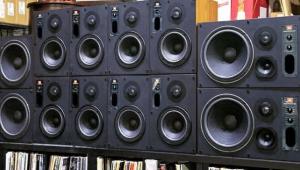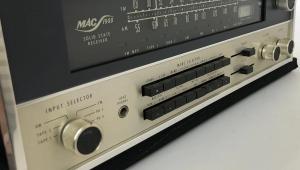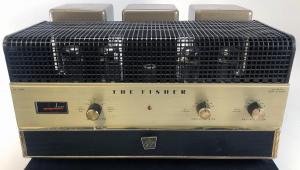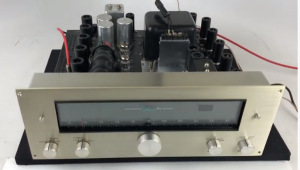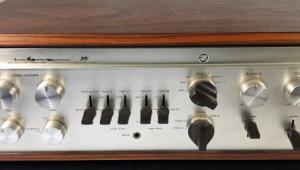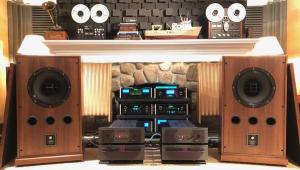The Model Eighteen: The First Marantz Receiver
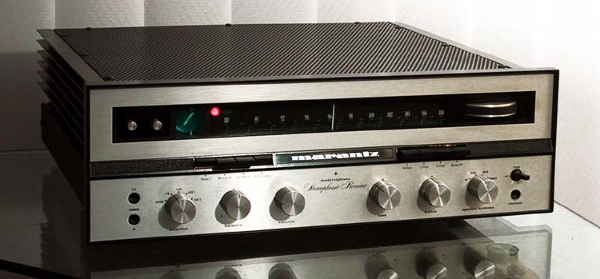
By the mid to late 1960s, rock and roll of the 1950s and early ‘60s was morphing into a new multi-faceted genre called “rock” with Led Zeppelin, The Jimi Hendrix Experience, The Who, and others leading way in the wake of The Beatle’s 1967 breakthrough, Sgt. Pepper’s Lonely Hearts Club Band. Music was undergoing profound change, which meant the 1950s hobbyist pursuit of “hi-fi” had to grow up fast to meet a growing demand for audio gear that was affordable and easy to hook up and use.
Audio pioneers Harman Kardon and H.H. Scott addressed this market in 1958 (and Fisher a few years later) with a utilitarian component that combined a preamplifier, tube-based power amplifier, and AM/FM tuner in one box. The stereophonic receiver was born with an all-in-one design that simplified the enjoyment of music at home while accommodating the more expansive sound of the two-channel stereo recordings that were just becoming available. The move from mono to stereo was an exciting moment in the history of audio and remains the backbone of music enjoyment — at home and on the go — to this day.
As mainstream audio began to flourish in mid-to-late ’60s, the stereo receiver underwent the transition from vacuum tubes to more economical solid-state designs that relied on transistors to generate the power needed to drive the AR, KLH, and other popular speakers of the day. All of which brings us to 1968, the year another pioneering audio company introduced its first receiver.
Marantz, the company started by Saul Marantz in 1953, remained true to its purist roots for the first 15 years of its existence while building a reputation for stellar performance with a parade of tube-based gear that included the Model 7 preamplifier, Model 8B stereo amplifier, and Model 10B FM tuner featured in our Golden Age of Hi-Fi post. But by 1968, the company’s new owner (Superscope) decided it was time to exploit the rapid rise of transistor technology to further its goal of expanding the brand and the Model Eighteen Stereophonic Receiver was born.
In ”Marantz: The Man and the Company”, the Model Eighteen is characterized as the most important product during the company’s transition from tubes to transistors. The receiver boasted a stunning cosmetic design featuring the horizontal “Gyro-Touch” tuning control that would live on in Marantz receivers for years to come, audio circuitry designed by engineering wiz Sidney Smith, and an exceptional tuner built upon the expertise of noted designer Richard “Dick” Sequerra.
The Model Eighteen was also the last product to benefit from Saul Marantz’s direct input, according to this historical account. “Towards the end of the transition period from ownership by Saul Marantz to ownership by Superscope, the new management’s desire to broaden the brand’s appeal exacerbated the already existing friction within the company. Given the differences between the visionary/entrepreneurial spirit that gave birth to the Marantz Company and the new owners’ hard-nosed pragmatism and strong desire for more affordable products, this friction, however unfortunate, was inevitable.
“After being offered the largely ceremonial position of ‘President Emeritus’ in the fall of 1967, Saul Marantz resigned in December of that year and had no further direct relationship with the organization he founded. His last project was securing a new engineering team to continue product development for new Marantz-branded components as Sidney Smith, Dick Sequerra, and the rest of the ‘old guard’ left with him.”
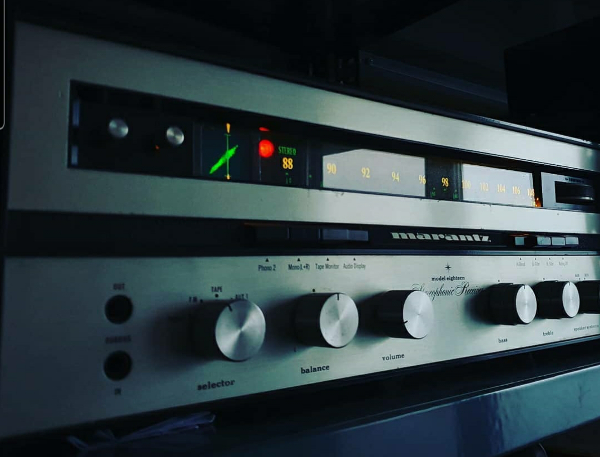
A Formidable Piece of Gear
Backed by the company’s three-year Golden Warranty, Marantz described the Model Eighteen in its 1968 brochure as the first time “eloquent ‘Sound of Marantz’ components [were combined] in a single unit” and touted “outstanding stereo control flexibility” with separate bass and treble controls for each channel, front and rear tape-recorder inputs, two phono inputs, and a headphone output. The receiver’s front panel is adorned with another unusual (and very cool) feature: an oscilloscope. It’s the only tube-based feature in the otherwise solid-state receiver.
Rated continuous (RMS) output of its amp section is listed as 40 watts per channel into 4 and 8 ohms with total harmonic distortion (THD) of 0.2% “at or below rated power” and channel separation of 35 dB. The receiver even incorporates time-delay circuit that mutes the output signal for 5 seconds after the unit is turned on to eliminate “irksome popping noises.”
A testament to the importance of radio in the 1960s, the tuner is given special attention in the brochure.
“Weak FM stations are received without being swamped out by strong stations, and powerful stations are received without distortion. It is now easy to “lock in” tightly on one station closely adjacent to another without fear that the adjacent station will interfere with the one you want.” The brochure goes on to explain that sharp selectivity is attained through the use of modified Butterworth filters that couple the four amplifiers in the IF stages, which are spec’d for a stereo separation of more than 30 dB.
“Absolute tuning accuracy through the built-in oscilloscope is an exclusive feature of Marantz tuners,” the text continues. “The oscilloscope also indicates correct antenna direction for best reception and tunes out multipath interference, as well as tuning to the maximum signal strength of each station. The oscilloscope can also be used to test for optimum stereo separation and stereo phasing of all components connected to the Model 18. Selecting the proper station becomes a delightful experience with the unique silky-smooth ‘GyroTouch’ tuning control (patent applied for), through which you tune by turning the actual flywheel itself.”
All of this technology could be had for the tidy sum of $695 in 1968, which is equivalent to just over $5,000 in today’s dollars. By comparison, the Model 7T solid-state preamplifier listed in the same brochure sold for $325, the Model 15 2 x 60-watt solid-state power amp for $200, and the vaunted Model 10B stereo tuner for $750!
Despite its formidable price, the Model Eighteen was a resounding success, selling more than 7,000 units through the end of 1969, when it was replaced by the Model Nineteen, according to the Marantz historian and aficionado behind @marantzhistory on Instagram. He’s currently working on a book about the history of Marantz but prefers to keep his identity secret.
“The faceplate of [the Model Eighteen] is unusual,” he explains. “It consists of a plastic frame holding two pieces of aluminum together as the faceplate [and] a heavy-duty chassis with giant cooling fins for the transistors. The interior is the same style as Marantz tube equipment with a lot of point to point wiring, combined with some PCBs (printed circuit boards).”
The historian, who is the proud owner of a working Model Eighteen, says the classic receiver has “plenty of power” and describes its sound as “very tube-like.” If you can find a unit, it’s worth restoring, he offers. “It’s a really good performer.”
Editor’s Note: A week or so after this story posted, SkyFi Audio released details on an all-original Marantz Model Eighteen it recently acquired. The company says the receiver is in “fantastic survivor condition with very little signs of use.” Click here for more detail.
Related:
More information on the Marantz Model Eighteen, including a download of the original owner’s manual, is available at hifiengine.com
McIntosh MAC-1900: The Original High End Stereo Receiver
Is This the Holy Grail of Classic American Hi-Fi?
